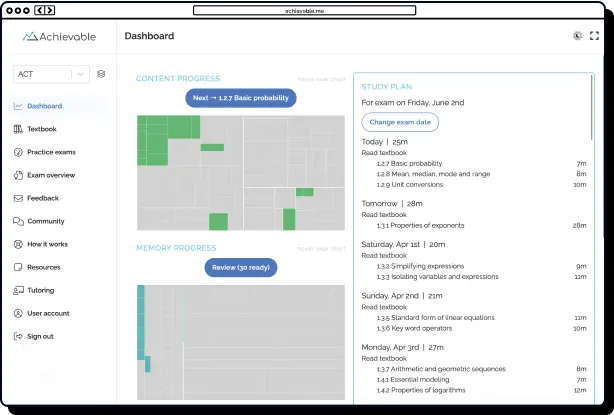
Approach med school apps with confidence during your gap year




Table of contents
- Build a strategic application during or after your gap year
- How to use a structured gap year plan to strengthen your medical school application
- Showcase your gap year achievements in every part of your medical school application
- How to secure powerful recommendation letters by actively involving mentors and supervisors during your gap year
This article is part 4 of 8 of our series on making the most of your medical school gap year, where we provide you with insights on studying for the MCAT, using your time effectively, and translating your experiences into compelling narratives. In part 4, we offer guidance on how to approach medical school applications as a gap year student for maximum impact.

Build a strategic application during or after your gap year
How to use a structured gap year plan to strengthen your medical school application
If you're considering a gap year before applying to medical school, approach it as an intentional period of growth and preparation - not just a break from academics. Medical school admissions committees look for applicants who demonstrate discipline, curiosity, and sustained commitment. By setting concrete goals and following a clear plan, you'll provide evidence of your academic and personal development, helping you stand out in a competitive applicant pool.
How successful pre-meds maximize their gap year:
- Months 1-3: Establish your foundation
- Set a target MCAT score that aligns with requirements for your top-choice schools.
- Apply for meaningful clinical roles, such as medical scribe, EMT, or CNA, to gain firsthand patient experience.
- Start outlining your personal statement, focusing on formative moments that inspired your interest in medicine.
- Tip: Treat this phase as your professional onboarding - build habits that support steady progress (practical gap year planning guide).
- Months 4-6: Balance and integrate
- Combine clinical work with consistent MCAT study, prioritizing both patient interaction and focused review sessions.
- Connect your hands-on experiences to what you're learning in science courses. For instance, seeing emergency care in action can make cardiac physiology more tangible.
- This integration will strengthen your MCAT results and help you stick to a productive schedule (impact of gap years on MCAT performance).
- Months 7-9: Strengthen your application
- Refine your personal statement with input from mentors or advisors.
- Secure recommendation letters from supervisors who have observed your growth firsthand.
- Fill in any remaining gaps - such as shadowing, volunteering, or assuming leadership roles.
- Months 10-12: Apply and adapt
- Submit your primary and secondary applications, and consider an MCAT retake if needed.
- Make sure your resume, essays, and references clearly show how your gap year prepared you for medical school.
By being proactive and goal-driven, you'll transform your gap year into a compelling story of readiness for medicine. According to the AAMC, a thoughtfully structured gap year can become a major strength in your application (AAMC recommendations for making the most of your gap year). The applicants who shine are those who use this time intentionally.
Organize your gap year with specific, measurable targets. Connecting MCAT preparation, clinical experience, and self-reflection to concrete outcomes makes your application more persuasive to admissions committees seeking maturity and purpose.
Showcase your gap year achievements in every part of your medical school application
To make your gap year a true differentiator, weave it into your application as a cohesive narrative - don't just list activities. Admissions committees want to see your growth, adaptability, and motivation for medicine.
Strategies to highlight your gap year:
- Document thoroughly. Keep detailed logs or journals that track not just what you did, but how you grew and responded to challenges (advice on documenting gap year experiences).
- Be precise in your experience section. Use quantifiable details in your AMCAS or AACOMAS entries. For example:
"Volunteered 200+ hours at CoSMO clinic serving uninsured patients in Northern Harlem, collaborating with a multidisciplinary team to implement a follow-up protocol for hypertensive patients."
Explain how each experience built skills like leadership, empathy, teamwork, and analysis.
- Leverage transcripts. Highlight extra coursework or post-bacc achievements (such as a master's at Columbia's Institute of Human Nutrition) to show academic readiness. Mention specific projects that relate to your preparation.
- Optimize your recommendations. Recommendations from gap year mentors and supervisors are often more recent and detailed. Structured gap year programs can lead to stronger, more specific letters (Columbia University benefits of a gap year before medical school).
- Showcase transformation. MedEdits highlights that applicants who share transformative experiences and lessons learned are more memorable (MedEdits analysis of gap year advantages). Describe how your gap year changed your perspective or helped you develop new skills.
Pro tip: Frame your application as a story showing clear progression and deepening commitment to medicine. This will also give you authentic, compelling material for medical school interviews.
How to secure powerful recommendation letters by actively involving mentors and supervisors during your gap year
Strong recommendation letters are rooted in recent achievements and genuine relationships. How you build connections with mentors, supervisors, and faculty during your gap year can directly impact your application's strength.
Reach out early
Admissions committees value letters with specific, firsthand insights. Identify potential recommenders well ahead of deadlines (at least two months in advance):
- Meet in person or send a personalized message about your medical school goals and share your resume.
- Explain your gap year objectives and how your experiences will prepare you for medical school.
This helps recommenders follow your progress and provide richer, more grounded endorsements.
Maintain active relationships
If you've left school, keep former professors and mentors in the loop:
- Send updates about your gap year projects, milestones, and application status.
- Highlight specific achievements and skills so your growth stays top of mind.
The most effective letters include concrete examples of your accomplishments and ambitions.
"Letters describing the projects you tackled, your growth, and your future ambitions stand out - details only possible if you share your objectives openly." (Student Doctor Network discussion on gap year recommendation letters)
Choose recommenders who know you well
Supervisors and mentors from gap year clinical or research jobs can often write more insightful and timely letters than professors you haven't worked with recently. They can:
- Share specific stories about your teamwork, professionalism, and impact.
- Offer in-depth evaluations of your clinical or research performance, adding credibility to your application.
Make every letter stronger:
- Provide an updated resume or CV listing your gap year achievements.
- Schedule check-ins before letters are written to discuss your goals and progress.
By intentionally building relationships with mentors and supervisors, you'll ensure your recommendation letters offer powerful, detailed support for your medical school candidacy.
Click here for part 5, "Craft a cohesive narrative with your gap year in application essays." Read on for insights on how to write about your gap year experiences with meaning and purpose.

